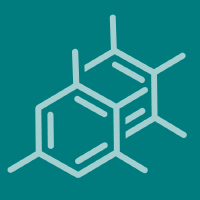Topic Editors


Petroleum and Gas Engineering, 2nd edition
Topic Information
Dear Colleagues,
This Topic is a continuation of the previous successful Topic, “Petroleum and Gas Engineering (https://www.mdpi.com/topics/N74972UZ6U)”.
Petroleum and gas engineering is an engineering technology field that uses scientific theories, methods, technologies, and equipment to efficiently drill underground oil and gas resources, maximally and economically exploit oil and gas in the formation to the ground, and safely separate, measure, and transport oil and gas. As an important part of energy in human society, oil and natural gas play an extremely important role in the development of the world economy, human social life, and civilization due to their irreplaceable and non-renewable nature. Due to the deep reservoir burial, low permeability, and ultra-low permeability in physical properties, heavy oil and super heavy oil in oil products, high pressure and high temperature, formation heterogeneity, and difficulty in wellbore formation of oil and gas, it is very difficult to drill and achieve further development.
This Topic aims to bring together relevant researchers from industry and academia to share their latest discoveries and developments in the fields of oil and gas engineering. The topics of interest include but are not limited to the following:
- Oil and gas field development plan and production technology;
- Oil and gas well fluid mechanics, rock mechanics, and oilfield chemistry technology;
- Theory and method of reservoir description and development geological modeling;
- Percolation theory and reservoir numerical simulation;
- Theory and method of oil and gas field development;
- Theory and technology of enhanced oil recovery;
- Multiphase pipeline flow and oil–gas field gathering and transportation and oil-gas treatment technology.
Prof. Dr. Xiaochuan Wang
Prof. Dr. Yulong Zhao
Topic Editors
Keywords
- shale gas exploitation
- water jet and application
- unconventional oil and gas
- drilling materials
- exploration well logging
- reservoir protection
Participating Journals
| Journal Name | Impact Factor | CiteScore | Launched Year | First Decision (median) | APC | |
|---|---|---|---|---|---|---|

Applied Sciences
|
2.5 | 5.3 | 2011 | 18.4 Days | CHF 2400 | Submit |

Energies
|
3.0 | 6.2 | 2008 | 16.8 Days | CHF 2600 | Submit |

Molecules
|
4.2 | 7.4 | 1996 | 15.1 Days | CHF 2700 | Submit |

Processes
|
2.8 | 5.1 | 2013 | 14.9 Days | CHF 2400 | Submit |

Resources
|
3.6 | 7.2 | 2012 | 26.1 Days | CHF 1600 | Submit |

Gases
|
- | - | 2021 | 25.8 Days | CHF 1000 | Submit |

MDPI Topics is cooperating with Preprints.org and has built a direct connection between MDPI journals and Preprints.org. Authors are encouraged to enjoy the benefits by posting a preprint at Preprints.org prior to publication:
- Immediately share your ideas ahead of publication and establish your research priority;
- Protect your idea from being stolen with this time-stamped preprint article;
- Enhance the exposure and impact of your research;
- Receive feedback from your peers in advance;
- Have it indexed in Web of Science (Preprint Citation Index), Google Scholar, Crossref, SHARE, PrePubMed, Scilit and Europe PMC.
Related Topic
- Petroleum and Gas Engineering (36 articles)

